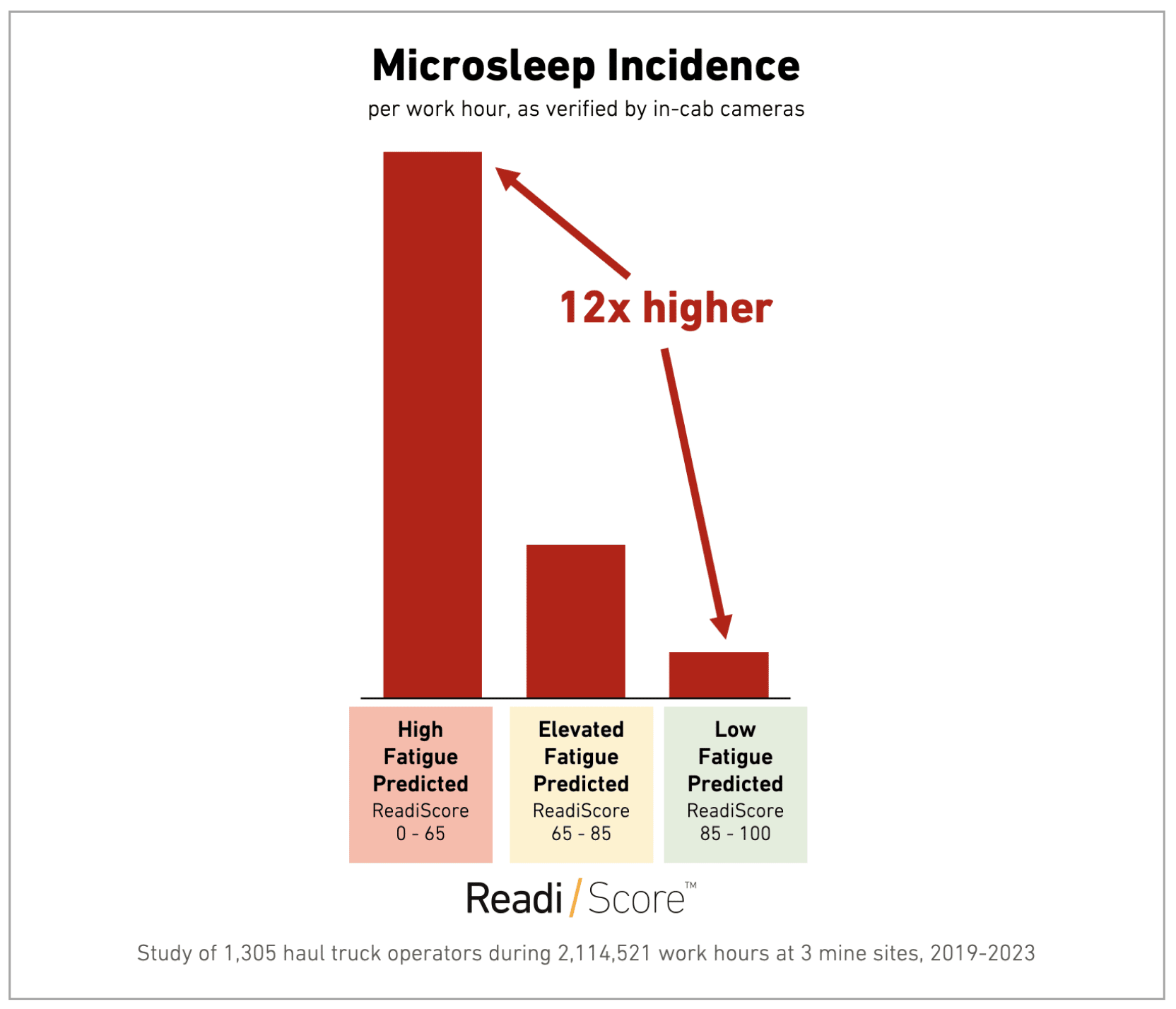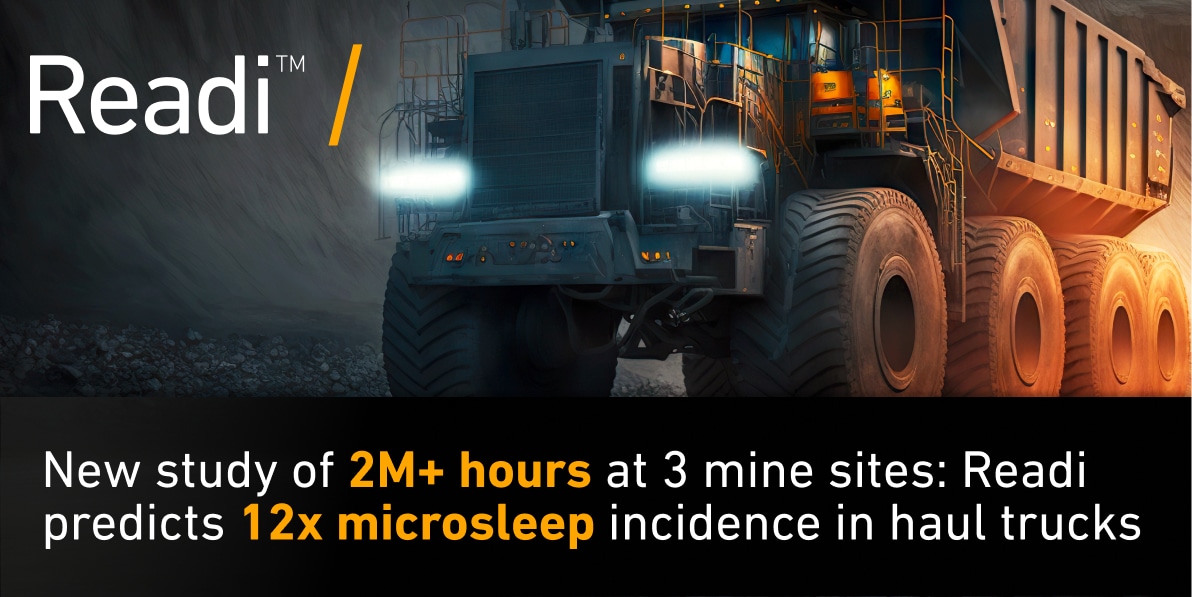Feb 17, 2023
New study of 2M+ hours at 3 mine sites: Readi predicts 12x higher chance of microsleeps
New research released today from Fatigue Science, the leader in predictive fatigue management technology, revealed the striking ability of its Readi platform to predict the likelihood of an operator’s microsleeps before high-risk work begins.
Three studies, conducted over a 4-year period in collaboration with 3 major mine sites in Mexico and Peru, collectively confirmed a 12x higher likelihood of operator microsleeps when Readi had predicted that the operator would become highly fatigued – as compared to the baseline rate for an operator not predicted to be fatigued.
A groundbreaking set of studies, the research is based on an analysis of 2.1 million work hours, with over 1,300 participating haul truck operators across the three sites.

Methodology:
For every hour worked, each participating haul truck operator received a predictive “ReadiScore”, indicating that operator’s predicted fatigue level. These fatigue predictions were generated by the Readi platform, using the SAFTE Biomathematical Fatigue Model and a range of inputs for each operator.
Crucially, all ReadiScores were generated before the start of each shift and delivered to shift supervisors, enabling proactive fatigue countermeasures that would not have been possible without this technology.
ReadiScores were then correlated with the incidence per work hour of actual fatigue events, which were recorded by in-cab camera-based fatigue detection systems. In two of the three mines, the CAT Driver Safety System (DSS) technology was used to detect microsleeps. In the other study, a similar system known as Hexagon Operator Alertness System (OAS) was used.
The largest of the three case studies took place at a large gold mine in northern Mexico and involved the participation of 786 haul truck operators. Fatigue data were analyzed for a period of 1,295,758 work hours. In this case, a 12x difference was found between the incidence rate of microsleeps for work hours when operators had a ReadiScore under 65 (indicating high predicted fatigue) vs. hours when operators had a ReadiScore of 85 or higher (indicating low predicted fatigue).
The second largest case study involved a copper mine in southern Peru. A total of 265 workers and 687,736 hours were analyzed, and results indicated a 8x difference in microsleeps in similar terms. Finally, the third study involved a polymetallic mine in central Mexico, with 254 participating workers and 131,027 work hours analyzed. Results from this study indicated a 14x elevated incidence of microsleeps when Readi predicted an operator to be fatigued.
Taken together, the three studies on a weighted basis indicate that Readi is able to predict an average 12x elevated incidence of microsleeps when it predicts an operator to be highly fatigued.
Implications for Fatigue Management Best Practices
The results of these case studies are particularly significant given their large sample sizes and the consistency of the results, and they confirm the value of using predictive fatigue management technology in day-to-day operations. Using predictive fatigue technology, such as the Readi platform, can provide supervisors with information on the predicted fatigue levels of individual workers before shifts begin. These data enable data-driven decisions on how to manage fatigue risks, such as scheduling breaks or adjusting workloads in exceptional cases.
Adoption of predictive fatigue management is rising rapidly in the mining sector, and Fatigue Science is proud to have received recognition for ushering in this new best practice, in the form of the US National Safety Council’s 2022 Safety Innovation Award.
All three participating mine sites continue to use Readi on a universal, site-wide basis, among many other Fatigue Science customers who do the same. Moreover, they have each renewed contracts year after year, as the technology has proved its value to both safety and productivity. (Learn more here on the ~$6M annual benefit to productivity per average mine site.)
At Fatigue Science, we are proud to have played a role in these important studies, and we look forward to continuing to support mining companies in their efforts to manage fatigue risks and create safer and more productive workplaces.
If you would like to learn more about how Readi’s predictive fatigue management technology can support your own operational and safety goals, contact us today.
or download our free eBook on the Science of Sleep for industrial workforces
